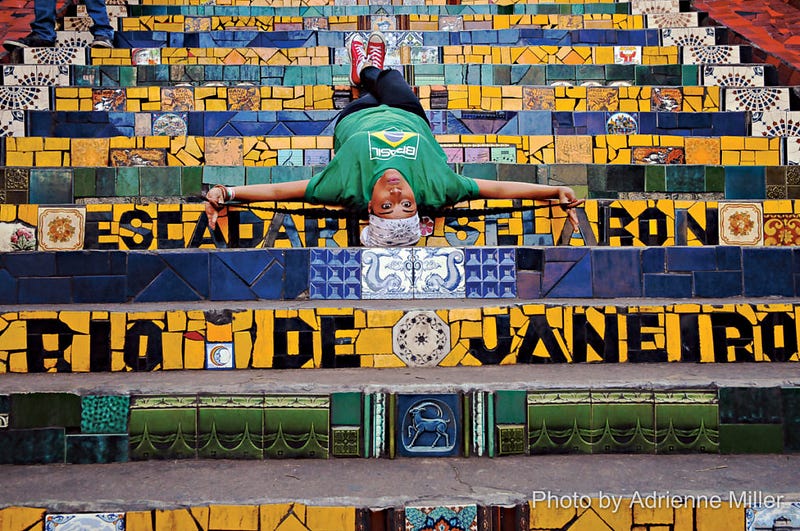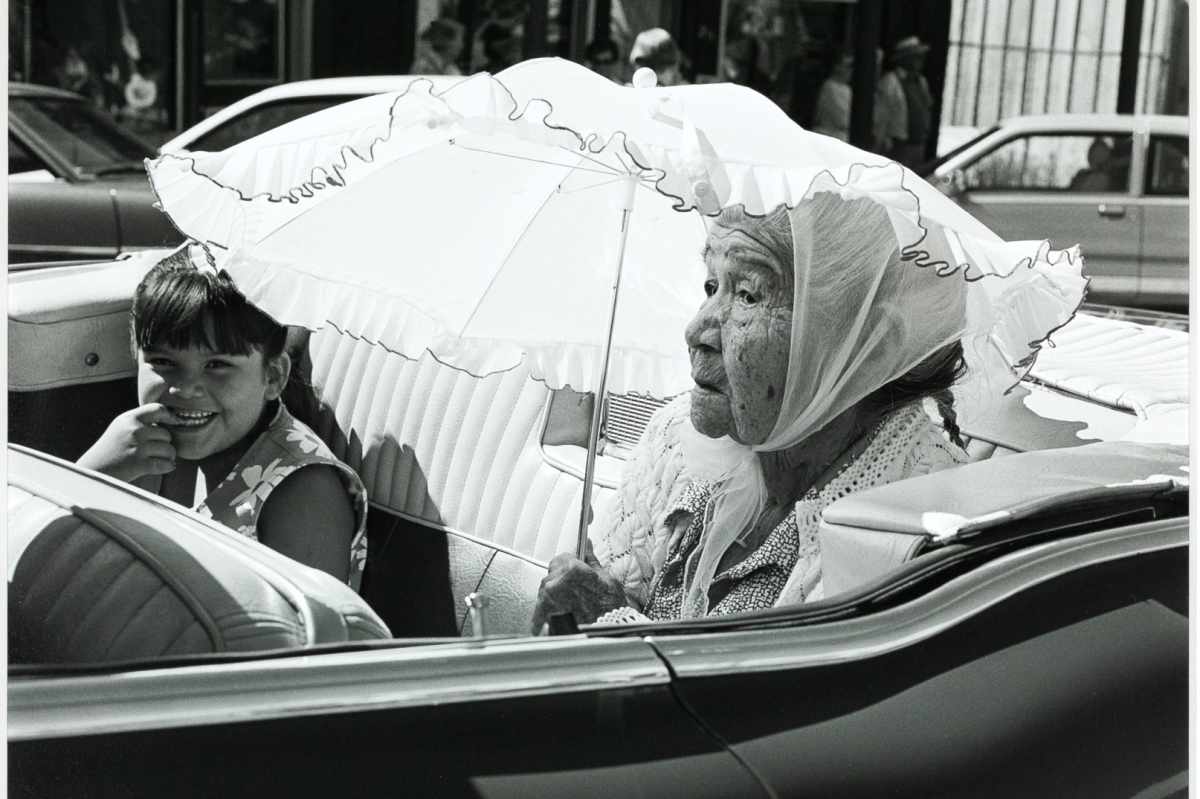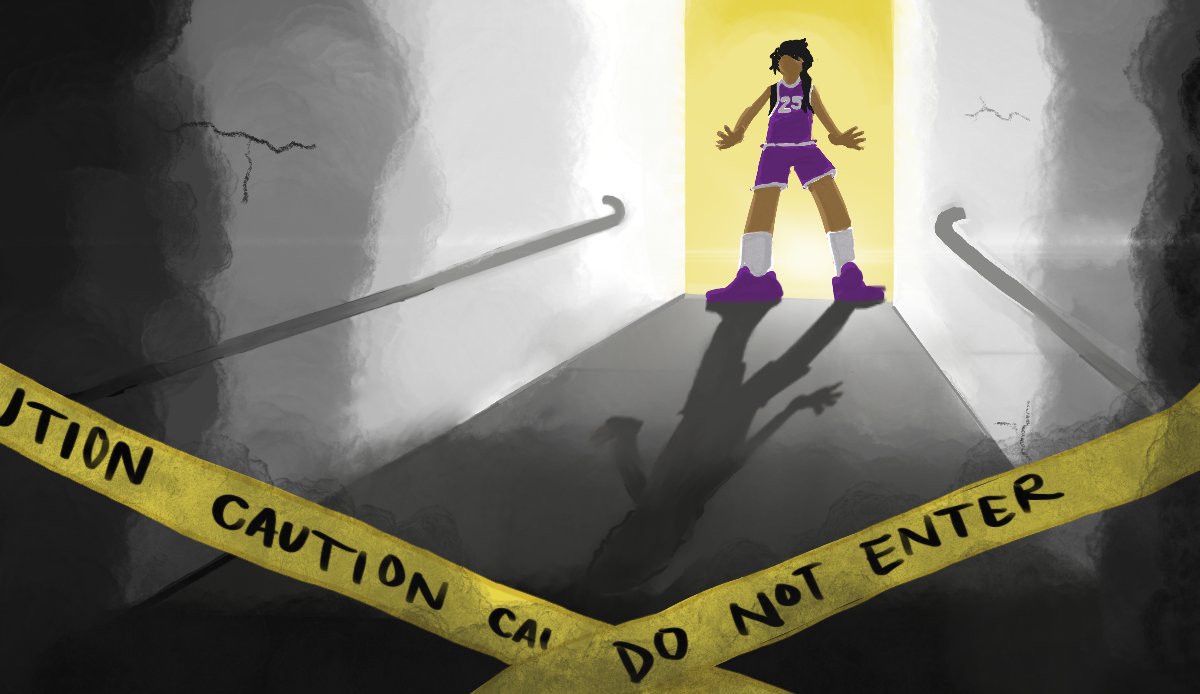A moment of GLORY

Aug. 16: French athletes Beatrice Edwige and Siraba Dembele embrace in celebration at the end of the Women’s Team Handball Quarterfinals in the Future Arena at Barra Olympic Park. The French came from behind to beat Spain, with a final score of 27 to 26.

Aug. 14: Fencing rivals France and Italy face off in the gold metal match for Men´s Team Epée. Ultimately, France took the gold medal, with a final score of 45 to 31. Of the three weapons used in sport fencing, the modern epée is the largest and heaviest.

>Aug. 19: Members of the Taekwondo World Federation put on a taekwondo demonstration prior to the start of the matches in Barra Olympic Park’s Carioca Arena 3. The park consists of nine sporting venues and was originally constructed for the 2007 Pan American Games.
A symbol of UNITY

Aug. 16: A group of Brazilians cheer for Thiago Braz de Silva at the Barra Olympic Park. de Silva won a gold medal in Pole Vaulting on Aug. 15. De Silva set the Olympic record for Pole Vaulting this year, with a height of 6.03 meters. He is considered a national hero by Brazillians.

Aug. 18: San Francisco native Maynak Patel, displays the U.S. flag at the foot of a statue of Cristo Redentor. This is one of the world’s largest statues depicting the figure of Christ. It has become a cultural icon for Rio, and is listed as one of the New Seven Wonders of the World.

Aug. 16: Canadian spectators are in full regalia in Barra Olympic Park, Rio de Janeiro. Canada was awarded four gold, five silver and 15 bronze medals this year at Rio. Additionally, Canadian Swimmer Penny Oleksiak became the most decorated athlete in Canada’s history.
A reflection on INEQUALITY

YouTube superstar Lilly Singh sprawls out on Brazil’s Escadaria Selarón, a famed set of tile steps. The steps were created by Chilean-born artist Jorge Selarón as a dedication to the Brazilian people. Singh traveled to Rio from Toronto, Canada, to cover the Olympics via YouTube.

From the top of Botofogo’s Pão de Açúcar, a distinctive feature of Rio de Janiero’s landscape, the city buzzes with Olympic fervor. Copacabana Beach can be seen in in the upper left, while the world-renowned statue Christo Redentor stands at the top of the hill in the upper right.

The rundown streets of Lapa represent the rampant inequality Rio residents live with daily. Brazil’s economic gap has come into focus during this year’s Olympic Games, represented by a juxtaposition of skyscrapers, Olympic arenas, and impoverished favelas.
Viewpoint — For U.S. boxer, two golds but no green
“I get to fight without going to jail,” said U.S. boxer Clarissa Shields, a 21-year-old Olympic Gold Medalist.
Shields is the first American boxer ever to win back-to-back Gold Medals at the Olympics.
In an NBC special about her, a reporter describes her M.O.: “When she hits, she hurts.”
I’m not that interested in watching hours and hours of sports, so I taped the games really just to watch Shields’s fight.
Nothing.
Now that hurt.
Every four years, we see so many stories about individual Olympic athletes. But where are the stories about Clarissa Shields? Why are her challenges any less dramatic than those of other athletes that viewers eat up?
Shields personifies the formidable strength of the women of her hometown, Flint, Mich.
To me, Shields represents the incredible force of Flint’s women, who have been fighting for the right to have clean potable water. These women are challenging the mammoth powers that have held their city hostage.
Footage of Shields as she runs through the boarded up, burnt down buildings of Flint recalls the town’s toxic water story. Shields’s ambition to become the world’s strongest boxer — not just female boxer — illustrates her unyielding character against prohibitive odds. Her own personal story reflects her city’s burden, making her efforts all the more herculean.
She began boxing as a reaction and resistance to humiliation and dehumanization from sexual molestation at ages 5 and 7, bullying she’d endured at school because she was skinny and smart, and grief and despair over friends she’d seen buried because of the city’s gangs and guns.
She was a young girl when she started hitting the gym daily at 6 a.m., even though the doors didn’t open until 8. Her coach saw her work, beating all of the boys, and he began to train her seriously at a young age.
She was only 17 when she won the Gold at the Olympics in London. She came home to much fanfare in Flint.
She saw what typically happens to Olympic Gold Medalists when money from endorsements floods winners, and she felt happy and fulfilled.
The endorsements never came. So she started training again. She would be 21 years old, 160 pounds of solid muscle, for the next Olympics in Rio.
She won the Gold again.
Again, she expects to be able to support her family with all of the coming endorsements. With that money she also plans to help other children and young people of Flint. Although her interviewers often refer to the rapes she’d survived, she doesn’t like to think or talk about them.
She only wants to think and live boxing. And I am hoping to see more of her story anytime now.
Alison Stapp is the Copy Editor at the Laney Tower. Email her at alisonstapp5269(at)gmail.com.

























